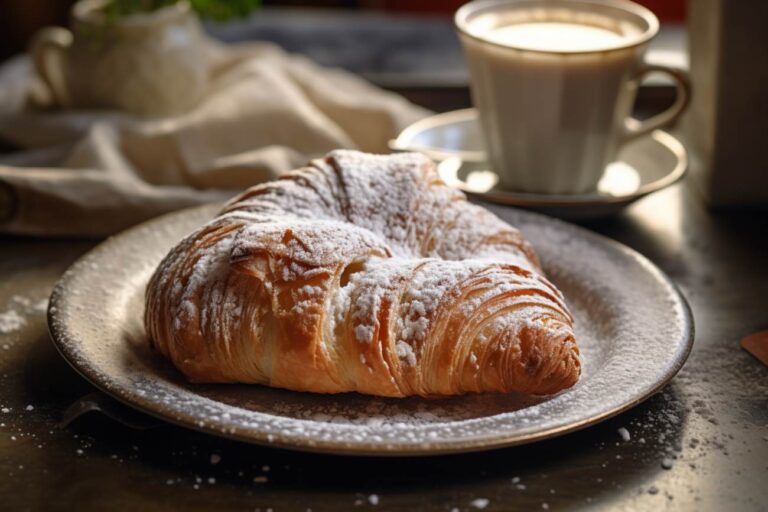Sfogliatelle are exquisite Italian pastries that have captivated the taste buds of people around the world. These delectable treats, often referred to as „lobster tails” due to their unique shape, originate from the Campania region of Southern Italy. Sfogliatelle are known for their flaky, crisp layers and a rich, sweet filling that can vary from ricotta cheese to citrus-infused creams. In this article, we will delve into the world of sfogliatelle, exploring their history, variations, and the art of making these mouthwatering pastries.
The history of sfogliatelle
The story of sfogliatelle traces back to the convents of Naples in the 17th century. Nuns were known for their culinary prowess, and they created this pastry masterpiece as a way to use up excess ricotta cheese, which was abundant in the region. Over time, the recipe evolved, and sfogliatelle became a cherished Italian pastry enjoyed during special occasions and as a delightful treat during coffee breaks.
The sfogliatella riccia
One of the most iconic variations of sfogliatelle is the „sfogliatella riccia.” This version features hundreds of flaky layers meticulously rolled into a cone shape, resembling the tail of a lobster. The preparation of sfogliatella riccia is an art form in itself, requiring skill and patience. The result is a pastry that is not only visually stunning but also incredibly delicious.
Making sfogliatelle
The process of making sfogliatelle is a labor of love. The dough, made from flour, water, and a touch of salt, is rolled out paper-thin. It is then layered with butter or lard, folded, and rolled out again. This process is repeated several times to create the characteristic flaky layers.
For the filling, ricotta cheese is blended with sugar, citrus zest, and sometimes a hint of cinnamon. The creamy filling is then piped into the pastry shell, and the sfogliatelle are baked until they achieve a golden brown hue. Finally, a dusting of powdered sugar adds the perfect finishing touch.
Enjoying sfogliatelle
Sfogliatelle are best enjoyed fresh from the bakery, still warm and fragrant. Their crispy layers contrast beautifully with the creamy filling, creating a harmonious blend of textures and flavors. While ricotta-filled sfogliatelle are the most traditional, modern variations may feature chocolate, almond paste, or fruit-flavored fillings, offering a wide range of taste experiences.
Sfogliatelle Around the World
Today, you can find sfogliatelle in Italian bakeries around the world, and they have gained popularity among pastry lovers of all backgrounds. These delightful pastries have become a symbol of Italian culinary excellence and are often served at weddings, holidays, and other special occasions.
Frequently asked questions
What is the difference between sfogliatella and sfogliatella riccia?
The main difference lies in their appearance and texture. Sfogliatella riccia has hundreds of flaky layers rolled into a cone shape, resembling a lobster tail, while traditional sfogliatella may have a simpler, smoother shell.
Can I make sfogliatelle at home?
While making sfogliatelle at home can be challenging due to the intricate layering process, it is certainly possible with practice and patience. There are many recipes and tutorials available to help you master this Italian pastry.
What other fillings can be used in sfogliatelle?
While ricotta cheese is the classic filling, you can get creative with your sfogliatelle fillings. Some popular alternatives include chocolate, almond paste, and fruit-flavored creams.
Where can I buy authentic sfogliatelle?
You can find authentic sfogliatelle at Italian bakeries, especially those specializing in pastries and desserts. Additionally, some high-end grocery stores may carry them in their bakery sections.
Zobacz także:






